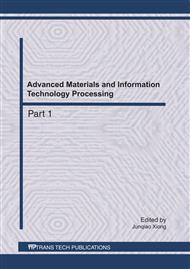p.1078
p.1082
p.1086
p.1090
p.1096
p.1103
p.1108
p.1114
p.1120
Cutting Display of Industrial CT Volume Data Based on GPU
Abstract:
The rapid development of Graphic Processor Units (GPU) in recent years in terms of performance and programmability has attracted the attention of those seeking to leverage alternative architectures for better performance than that which commodity CPU can provide. This paper presents a new algorithm for cutting display of computed tomography volume data on the GPU. We first introduce the programming model of the GPU and outline the implementation of techniques for oblique plane cutting display of volume data on both the CPU and GPU. We compare the approaches and present performance results for both the CPU and GPU. The results show that cutting display image generated by GPU algorithm is clear, frame rate on GPU is 2-9 times than that on CPU.
Info:
Periodical:
Pages:
1096-1102
Citation:
Online since:
July 2011
Authors:
Price:
Сopyright:
© 2011 Trans Tech Publications Ltd. All Rights Reserved
Share:
Citation:


